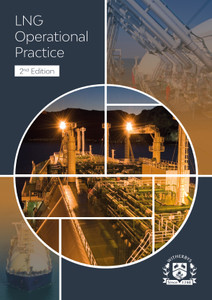
This guide sets out best practice for the operation and maintenance of LNG emergency release systems (ERS), with the aim of safeguarding personnel, the environment and property during LNG operations.
Developed with the input of manufacturers, terminal operators and LNG shippers, this publication applies a risk-based approach covering the structure and operation of ERS. It sets out guidelines and best practices for ERS usage and also examines ERS hazards and risk management. The annexes provide competencies and training guides and suggested further reading.
This document is provided to guide operators and maintainers of LNG Emergency Release Systems (ERS) to safeguard life, protection of the environment and property in that order.
ERS are common in modern LNG receiving and discharge terminals. Since the first simple quick connect/disconnect coupler (QC/DC) systems were installed in the 60s, the industry has progressed to today’s double ball valve and powered emergency release coupler (ERC) with position indication system and defined working envelopes. The ERS provides a positive means to protect the terminal from damage to the marine loading arms (MLAs) and to protect the LNG carrier (LNGC) from damage to its manifold and piping systems.
The guidance contained in this document has been developed with the input of manufacturers, terminal operators and LNG shippers. A risk based approach has been used in its the development and it is recommended that terminals and other users of ERS use it as a template to better understand their specific location issues.
1.
Introduction
and
Scope
1.1
Introduction
1.2
Scope
2.
Emergency
Release
Systems
(ERS)
2.1
What
is
an
ERS?
2.2
Evolution
of
MLA
Safety
Systems
3.
Recommendations,
Guidelines
and
Best
Practices
3.1
General
3.2
ERS
Lifecycle
Considerations
3.3
Examples
of
Best
Practice
4.
Primary
and
Secondary
Purposes
4.1
Primary
Purpose
4.2
Secondary
ERS
Purposes
5.
Risks
5.1
Incident
Summary
5.2
Risks
from
Secondary
Purposes
5.3
ERS
Hazards
and
Risk
Management
Annexes
Annex
A
–
Competencies
and
Training
Annex
B
–
Suggested
Further
Reading
The Society of International Gas Tanker and Terminal Operators (SIGTTO) is an international body established for the exchange of technical information and experience, between members of the industry, to enhance the safety and operational reliability of gas tankers and terminals. Learn more: https://www.sigtto.org/about-us/
- Number of Pages:
- 97
- ISBN:
- 9781856097307
- Binding Format:
- Hardback
- Book Height:
- 300 mm
- Book Width:
- 215 mm
- Weight:
- 0.7 kg
- Author:
SIGTTO
- Published Date:
- January 2017
- Preview:
- Yes
- Publication Date:
- January 2017





